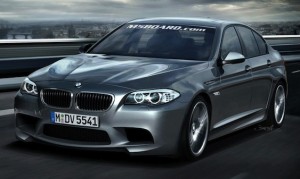
The 2012 BMW M5 is scheduled to be on sale all over North America in 2012 August. It is based on the newest 5 series. Do not make the mistake of thinking that the modern 4-door performance vehicle as a slightly made-over version of the midrange series of BMW. Siegfried Friedmann, the project leader reported that the latest M5 have about 20% of the components that the 5-series have. The other 80% is reported to be distinctive.
The latest M5 is larger than all others with an additional 55mm in length and 46ml in width. About 19,331 models were created between the year 2004 up to 2010. The height however has reduced to 13mm. The wheelbase also has increased by 74mm and operates rear and front tracks that have increased by 27mm over the regular 5-series at the front and is reduced by 38mm at the back; the second aspect of an upgrade in chassis which has the news M car adapting to a greatly altered geometry to the traditional four-door sibling.
Very important to the technical upgrade is the option to replace the V10 5.0 liter engine of the former M5 with a V8 4.4-liter twin-turbocharged being the latest in direct injection that is piezo-guided. The unit of 90 degree, mount 20mm lower in the bay of the engine than the traditional powerplants of the 5-series, is an advancement of the similarly built engine that the X6M use with full induction cross-bank system. But there is enough dissimilarity between the two car engines to allow officials of BMW M to report that the engine of the M5 is new.




No Comment.